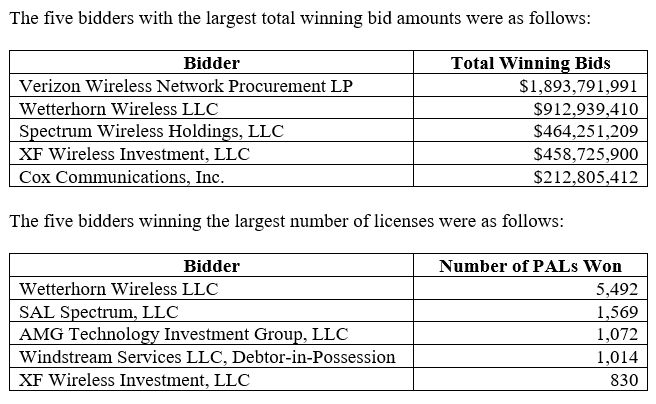Wireless companies pay large sums for up to 700 MHz of a 1 GHz band.
RF spectrum is scarce, there’s no getting around it. That’s why wireless providers pay huge sums of money to get access to even small slices of spectrum. In Auction 105, the FCC’s Office of Economics and Analytics (OEA) and the Wireless Telecommunications Bureau this week auctioned off 70 MHz of Priority Access Licenses (PALs) in the 3550-3650 MHz range, the so-called “3.5 GHz band.” That is, no company could bid on more than seven 10-MHz PALs with that 100 MHz swath of frequency (Figure 1).
Figure 2, two tables from the FCC’s press release, show the top five amounts paid and the top five number of licenses issued from the auction. In total, 228 bidders won 20,625 licenses, which are issued by county. That’s why the bidder summary includes such entities as Farmer and Merchants Mutual Telephone Company. Many of the bidders provide service in rural areas or might use the spectrum for private networks.
Verizon made its presence felt by spending nearly $1.9 billion. Dish Network, under the name Wetterhorn Wireless, took the prize for most PALs. AT&T did not participate. T-Mobile acquired eight licenses in six counties, but the company already has lots in midband spectrum, particularly from its merger with Sprint.






Tell Us What You Think!